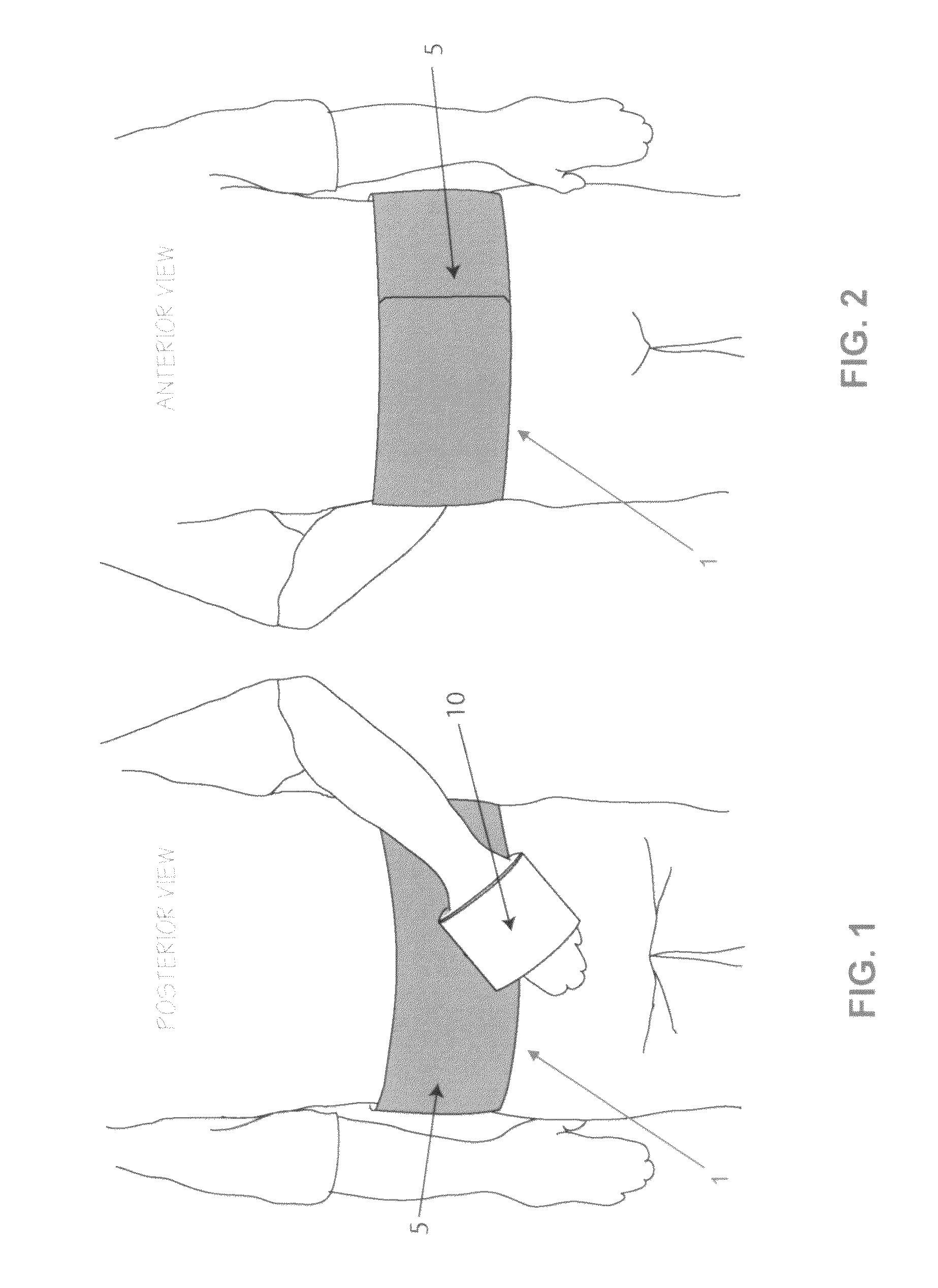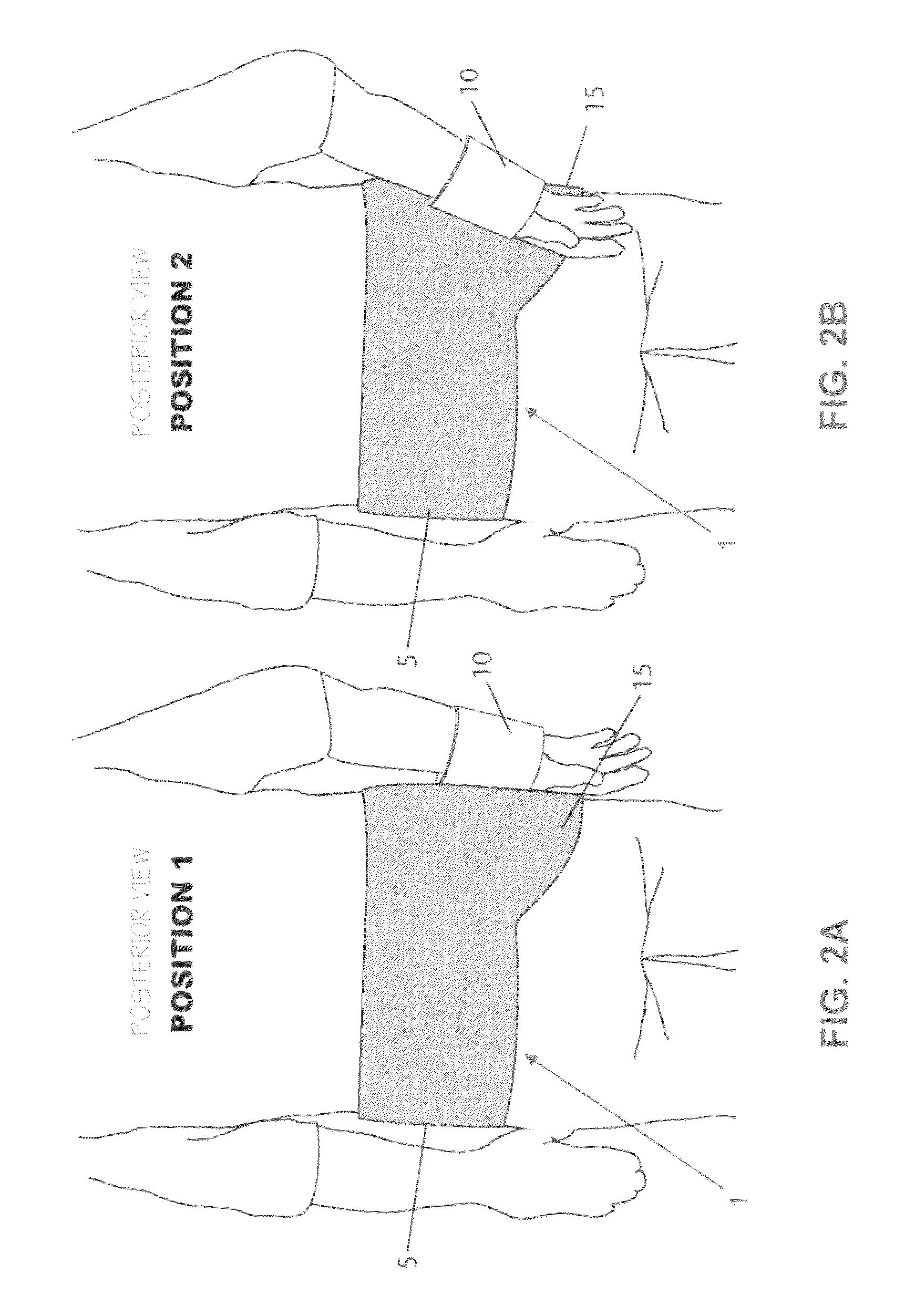Method and apparatus for therapeutically supporting the arm of a patient
a technology for supporting the arm and patient, which is applied in the field of physical therapy, can solve the problems of further limited range of motion, limited shoulder range of motion, and limited shoulder range of motion, and achieve the effects of avoiding muscle spasms and pain, facilitating effective physical therapy, and effectively stretching the capsule and other soft tissue structures
- Summary
- Abstract
- Description
- Claims
- Application Information
AI Technical Summary
Benefits of technology
Problems solved by technology
Method used
Image
Examples
Embodiment Construction
[0039]The present invention provides a new method and apparatus for therapeutically increasing range of motion in a shoulder compromised by a medical pathology and / or by the secondary effects of a surgical intervention. For convenience, the present invention will hereinafter be discussed in the context of its use for post-operative shoulder therapy; however, it should be appreciated that the present invention may also be used for other therapeutic needs of the shoulder and / or for other joints of the body.
[0040]Turning first to FIGS. 1 and 2, there is shown a therapeutic support 1 which comprises a waist belt 5 and a cuff 10. Waist belt 5 is intended to be wrapped around the waist of the patient and fixed in place (preferably on the anterior side of the patient) by a hook-and-loop (e.g., Velcro™) connector or by other means of the sort well known in the art, e.g., snaps, buttons, buckles, etc. Cuff 10 is intended to support the hand / arm of the patient, and is configured so as to be a...
PUM
 Login to View More
Login to View More Abstract
Description
Claims
Application Information
 Login to View More
Login to View More - R&D
- Intellectual Property
- Life Sciences
- Materials
- Tech Scout
- Unparalleled Data Quality
- Higher Quality Content
- 60% Fewer Hallucinations
Browse by: Latest US Patents, China's latest patents, Technical Efficacy Thesaurus, Application Domain, Technology Topic, Popular Technical Reports.
© 2025 PatSnap. All rights reserved.Legal|Privacy policy|Modern Slavery Act Transparency Statement|Sitemap|About US| Contact US: help@patsnap.com



